Tahitian Pearl Value: How is it Measured?
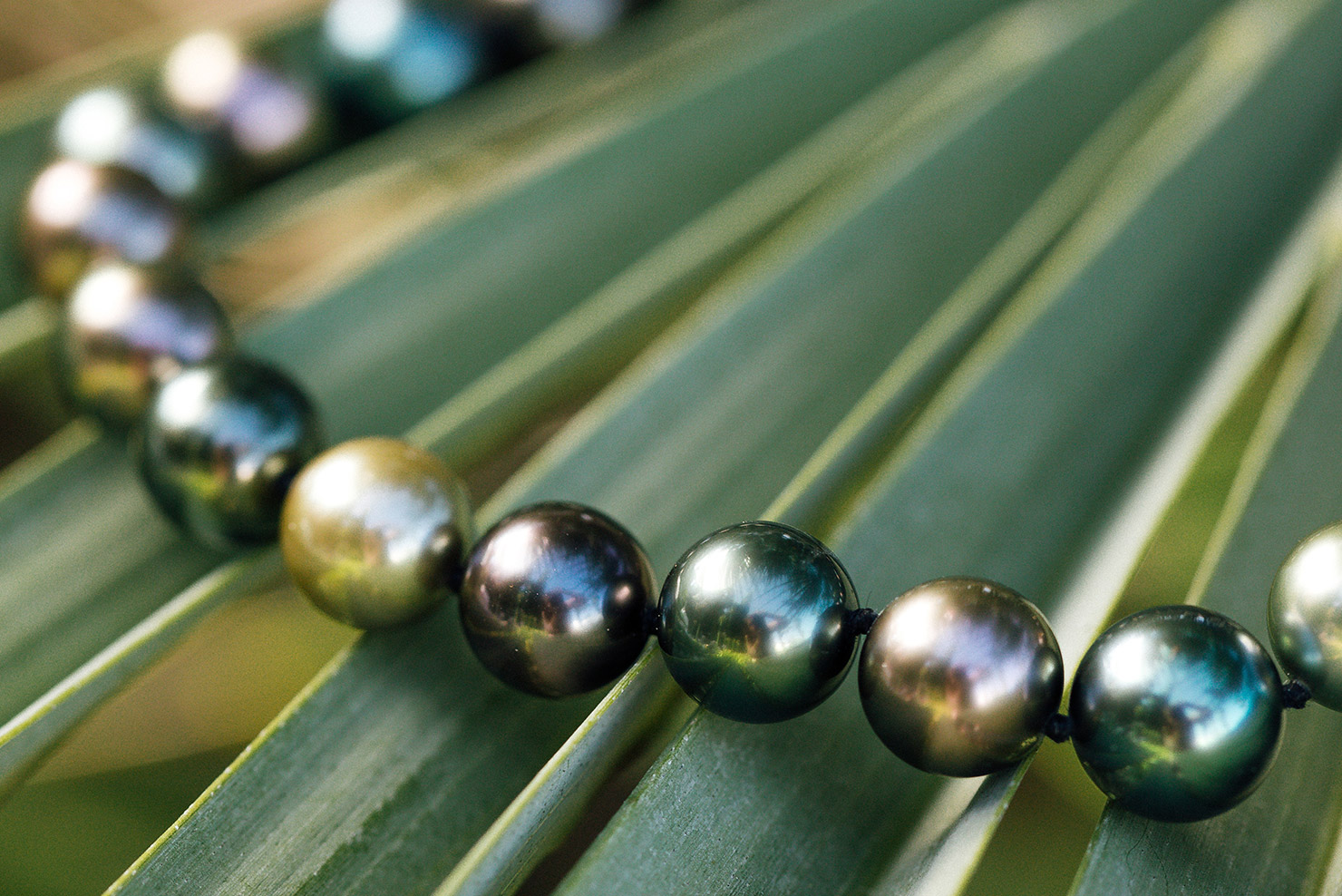

When it comes to purchasing pearl jewelry, there’s a plethora of choices available on the market. From color and size to shape and luster, each aspect plays a critical role in your decision-making process. It’s essential to understand what contributes to the value of a pearl to make an informed purchase.
Tahitian pearls, often regarded as the world’s most beautiful pearls, are renowned for their remarkable color diversity and size range. Harvested from the black-lipped oyster, Pinctada margaritifera, in the warm waters of French Polynesia, these pearls exhibit an extraordinary spectrum of natural colors, unlike any other variety of cultured pearls.
Several factors are considered when determining the value of Tahitian pearls. These include color, shape, size, luster, and surface quality. Each of these aspects contributes to the pearl’s overall beauty and appeal, thus affecting its worth in the market.
Contrary to popular belief, Tahitian pearls are not merely black. They come in an array of colors, including shades of green, blue, brown, silver, and gray. This rich color variety is one of the unique selling propositions of Tahitian pearls, setting them apart from other pearl varieties.
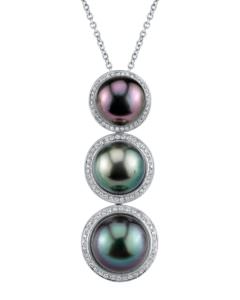
While all Tahitian pearl colors have their unique charm, some are more coveted than others. The iridescent peacock color, with green, gold, and purple hues, is one of the most sought-after. Similarly, the ‘aubergine’ or eggplant color, characterized by a dark purple hue, is highly prized.
Dark-colored Tahitian pearls, especially those with deep, rich overtones, are usually more valuable than lighter ones. This is due to their rarity and the captivating depth of color they exhibit.
Tahitian pearls come in a variety of shapes, including round, semi-round, button, circle, oval, drop, and baroque. Each shape possesses a unique charm and contributes differently to the pearl’s value.
Perfectly round Tahitian pearls are rare and highly coveted, making them the most valuable. Large pearls are also relatively rare, adding to their worth.
There are various Tahitian pearl shapes and sizes on the market. Several factors contribute to the size of a pearl, including the size of the implanted nucleus, the oyster’s age, and the length of time the pearl is allowed to grow within the oyster.
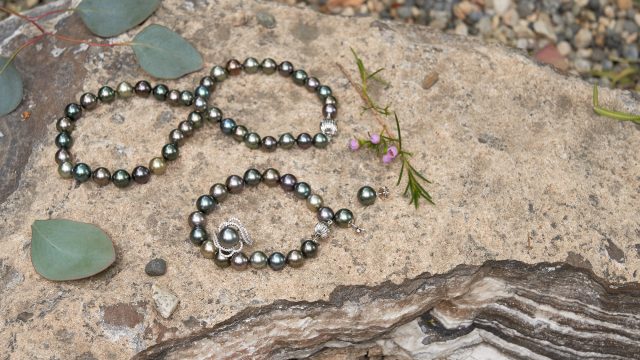
Larger pearls are more valuable because they require older oysters and longer cultivation times, making them rarer. Tahitian pearls are notably larger than most other cultured pearls, thus often fetching higher prices.
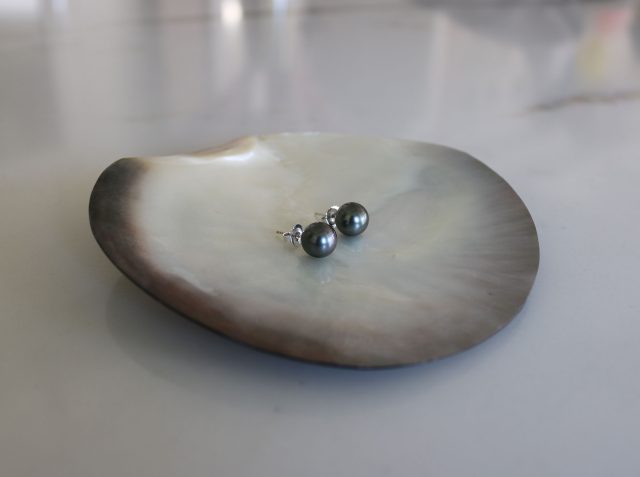
Luster refers to the intensity and quality of light reflected from a pearl’s surface. A pearl with high luster will exhibit sharp, bright reflections, while a pearl with low luster will appear dull and chalky. Tahitian pearls are known for their excellent luster, which greatly enhances their beauty.
Tahitian pearl luster is typically categorized into four main types: Excellent, Good, Fair, and Poor.
Pearls that fall under this category are highly valued as they showcase sharp, bright reflections. The surface of the pearl appears glossy, almost mirror-like, displaying a depth of light that gives the pearl its unique glow. These pearls can reflect objects clearly on their surface, much like a mirror.
Pearls with good luster exhibit clear reflections, but they might not be as sharp or bright as those with excellent luster. The surface may still appear quite glossy, with a reasonable depth of light, contributing significantly to the pearl’s allure. Pearls in this category still hold considerable value in the market.
Fair luster pearls display less sharp reflections, with the pearl surface seeming more satiny or soft rather than glossy. They have some depth of light but lack the mirror-like quality seen in excellent and good luster pearls. While still attractive, these pearls have a lower market value compared to pearls with higher luster.
Pearls with poor luster appear dull, chalky, or matte, with little to no reflections. They lack the depth of light seen in higher categories, which significantly reduces their appeal and market value.
The luster of a pearl is a result of multiple layers of nacre, the organic-inorganic composite material produced by oysters and other mollusks. It’s the interplay of light with these nacre layers that produces the pearl’s luster. Tahitian pearls, thanks to their thick nacre layers, are known for their exceptional luster.
It’s important to note that while luster significantly affects a pearl’s value, personal preference also plays a key role in the selection process. Some people might prefer the softer glow of a fair luster pearl over the glossy appearance of an excellent luster pearl. However, in terms of market value and general desirability, pearls with higher luster are typically more sought after.
A Tahitian pearl’s surface quality refers to the absence or presence of physical blemishes or irregularities on the pearl’s surface. While it’s rare to find a pearl with a completely flawless surface, those with fewer and less noticeable blemishes are generally more valuable.
Blemishes on a pearl can range from tiny pinpricks to larger pits, scratches, or bumps. While some blemishes can add character to a pearl, excessive or deep blemishes can detract from the pearl’s beauty and lower its value.
Professional jewelers often arrange pearls in a piece of jewelry so that the blemishes are less noticeable, maximizing the beauty of the piece. They may be set towards the clasp or hidden in a drill hole, for example.
In conclusion, several factors contribute to the value of a Tahitian pearl, including color, shape, size, luster, and surface quality. Each of these elements adds to the overall beauty and appeal of the pearl, affecting its market value.
Choosing a Tahitian pearl jewelry, be it necklaces, earrings or Tahitian pearl rings, ultimately comes down to personal preference. It’s about finding a pearl or a piece of pearl jewelry that you find personally beautiful and appealing. After all, the real value of a pearl lies in the pleasure and enjoyment it brings to its wearer.
Several factors determine the value of Tahitian pearls. These include color, shape, size, luster, and surface quality. Darker colored pearls, particularly those with peacock and cobalt blue overtones, are often the most valuable. The rounder and larger the pearl, the greater its value. Luster, which describes the pearl’s sheen, is also a significant factor, with high-luster pearls being more valuable. Lastly, the fewer the blemishes on a pearl’s surface, the more it is worth.
Yes, the size of Tahitian pearls can greatly influence their value. Larger pearls are generally more valuable because they require a longer cultivation period and occur less frequently. However, while size does affect a pearl’s value, it’s only one aspect to consider. Other factors like color, luster, shape, and surface quality are equally important.
Luster refers to the intensity and quality of light reflected from a pearl’s surface. It is a key factor that significantly influences a pearl’s beauty and value. Pearls with high luster appear brighter and more reflective, often described as having a mirror-like quality. Tahitian pearls are renowned for their exceptional luster, largely due to their thick layers of nacre, which contribute to their market desirability and high value.
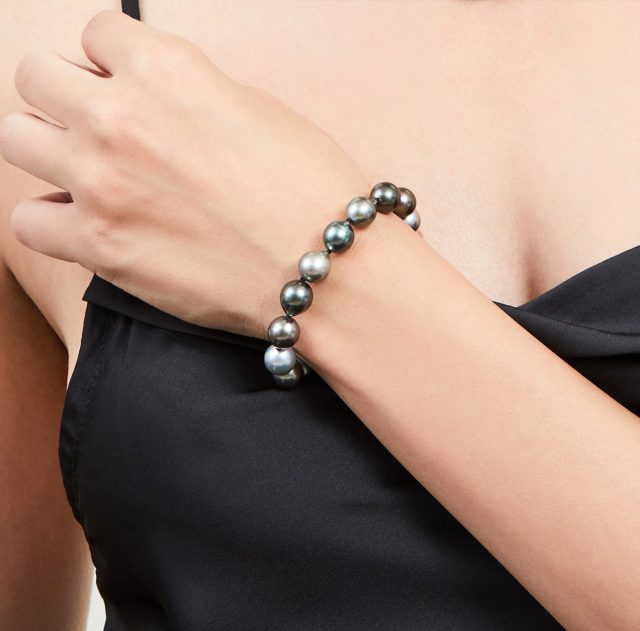
Discover the allure of Tahitian Pearl Bracelets – a blend of elegance and exotic beauty. Adorn your wrist with nature’s finest Tahitian pearls, handpicked for their unique charm and lustrous hues. Elevate your style with our classic and contemporary designs – or gift the gift or iridescence to your loved ones.
Signup now and receive an email once I publish new content.